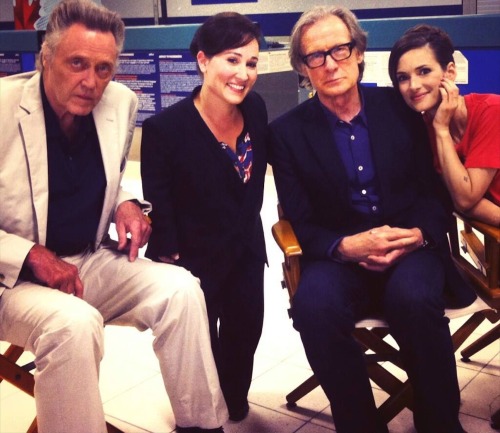|
Bill Nighy was the main reason I watched the PBS drama “Turks & Caicos” on Sunday night, about a British spy on the run. Nighy is so cool; I want to be him when I grow up.
But Nighy was not the revelation of this movie. In the second hour, a new character came sashaying right down the middle -- 4 feet, 1 inch, but 8 feet tall in attitude. Meredith Eaton – I never heard of her – was playing a highly capable character with a purpose. No sense ruining the plot if you catch up with it, and you should. She kept right up with actors like Nighy, Christopher Walken, Winona Ryder, Helena Bonham Carter and, oh yes, Ralph Fiennes. Because PBS and other stations have the annoying habit of running the credits at warp speed, I did not catch Eaton's name in the blur. How rude to actors. But I looked it up on the web, and Wiki had a full credit list, with links. I should have known from the Lawn Guyland accent: Eaton went to my alma mater, Hofstra University, majored in psych, minored in drama. She recently turned 40, and was the first female dwarf ever to have a major recurring role on an American TV drama (Family Law, 1999.) Hofstra has sent bombshells into the world before. Lainie Kazan (then Lainie Levine) was a classmate in the late ‘50’s, steaming up the new John Cranford Adams playhouse in “Pajama Game.” And a few years later, it was worth going back on campus to catch Madeline Kahn, long before she played Lili Von Shtupp in “Blazing Saddles.” In fact, there are Hofstra connections to three of the four people in the photo above. Christopher Walken was a dancer who went to Hofstra for one year before learning how to talk funny. I don’t believe Bill Nighy has any Hofstra connection. And Winona Ryder, so edgy in “Turks & Caicos,” has a Hofstra link in this way: about a decade ago I visited Francis Ford Coppola, another classmate, at his home in Napa. In his studio was a chair with the name Winona printed on it. Sit in it, Coppola motioned. So I did. He had directed her in “Dracula.” I’m counting it as a Hofstra connection. Now Hofstra has done it again, another actress who lights it up. Meredith Eaton is not in the final part of the trilogy, "Salting the Battlefield," next Sunday on PBS, but she needs to be in something else, and soon.
1 Comment
Leave a Reply. |
Categories
All
|










